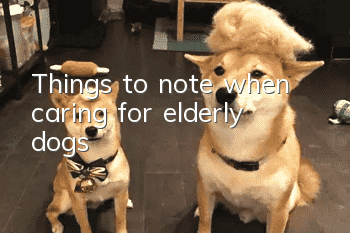Popular science: It is difficult to raise a new pet at home, how to survive the dangerous period?

For a puppy that has just been brought home, preparing nutrients and toys is secondary. The main thing is to adapt to the environment. At this time, its individual antibody function is extremely low, and the diseases it carries and new environmental diseases are most likely to infect the dog. Please remember not to pamper them with any food or drink, do not clean them at will for beauty, do not play without restrictions just because they like it, and do not give them any injections for health. At the same time, everyone must understand: health is guaranteed by careful and regular care, not by relying on drugs and treatment. When you are sick, medicine and treatment are indispensable, but for puppies who are not adaptable to the new environment, medicine and treatment are not only not necessarily good, but may be a fatal blow.
First, dietary requirements
1. It is best to use dog food of a suitable brand. Reason: Puppies don’t eat much. Dog food is nutritious and saves trouble, effort and worry in feeding.
2. If there are no conditions, you can feed it easy-to-digest food such as porridge. In order to enhance its appetite and nutritional content, you can add a small amount of its favorite supplements, such as vegetable juice, foam or a little minced chicken liver.
3. In the first week, feed an appropriate amount of VC according to the size of the dog every day or use other suitable foods to supplement vitamins to improve immunity.
Note: Avoid feeding meat, ordinary milk, ham, broken bones and other foods that are difficult to digest; avoid overeating, and avoid eating after exercise.
Tip: After chewing it yourself, feed it to the puppy, such as ordinary bread, biscuits, shaqima, etc., which is good for the puppy's health (you must not be sick) and easy for it to digest. , Feeding like this can also strengthen the relationship with people and make them more obedient. For very small dogs, such as dolls and Pomeranians, feeding like this is not troublesome, but don’t feed too much.
Second, ambient temperature requirements
The living environment of a newly purchased dog plays a decisive role in its survival. If the temperature is too high or too low, or the temperature difference changes too much, it will cause physical discomfort. It is most likely to cause colds, diarrhea, reduced body resistance, and induce other diseases. Disease.
The main thing to control the temperature is to pay attention to adjusting the living environment. In winter, pay attention to keeping warm and maintain temperature; in summer, pay attention to ventilation to keep cool.
1. When buying a puppy for the first time, try not to take the dog out too much. One is that it is susceptible to infection by stray germs, and the other is that it is susceptible to disease caused by the temperature. If the temperature difference between indoor and outdoor is large, don’t take it out; if you must take it out, you shouldn’t blow it in the air or play for too long.
2. No matter what the indoor temperature is, you must ensure that it has a warm nest so that it can have a place to go when it feels cold. In winter, you can add wadding and padding to the nest. In addition, if the temperature is not enough in the north, you can place it near a heater. In the south, you can use air conditioners, hot water bottles, electric heaters, etc.; in spring and autumn, when buying a dog during the changing seasons, you should pay most attention to the dog's temperature adaptation. ,It is necessary to gradually change the environment in the nest, and the temperature difference should not change too much; in summer, pay attention to ventilation to avoid stroke and water shortage.
3. Do not use high-wattage light bulbs to keep it warm. This is commonly used in most pet stores. It is not suitable for families and is not good for the health of first-time dogs.
4. The nest should be cleaned and disinfected frequently, kept dry and tidy! Do not wear clothes indoors to avoid reducing its adaptability and resistance; when going out, you can dress according to the outside conditions.
5. Pay attention to changing its sleeping habits. While maintaining good conditions in the nest, let it sleep in the nest. When the weather is bad, try not to let it sleep around.
Third, daily care
Never take a bath with water when you first arrive. Use dry cleaning powder to dry clean once every five days, and use a brush to brush for a while. Don't play too much to make it overworked.
The most important thing is to take care of yourself when you are sick.
Personal principle: Unless the conditions of the hospital are very good, unless the dog has been quarantined first and is guaranteed, otherwise, during these 20 days, as long as it is not a surgical disease, do not go to the hospital if you can, and do not go to the hospital if you can. Because most dogs are purchased for the first time at this time and have not passed the initial examination, their bodies lack resistance and are easily infected with hospital germs. At the same time, most hospitals are in poor condition, which can easily pose a threat to first-time dogs. At the same time, most doctors do not treat first-time dogs. If treated as a normal dog, most of the time there is only a dead end.
Most of the illnesses of first-time dog owners are colds, diarrhea, and vomiting, which are also the biggest headaches for pet owners. Usually, as long as they are not caused by infectious diseases brought at the time of purchase, such as canine distemper, parvovirus, etc., they are mostly caused by care. If caused improperly, in addition to following the above requirements for diet and maintaining the environment, the following methods can be used to solve the problem of sick dogs.
A: Diarrhea and vomiting caused by improper feeding type and amount. You only need to fast for 8-12 hours first (after four hours of fasting, you can feed high-concentration glucose water in small amounts multiple times (one-hour intervals)), and then feed food in small to maximum portions (two-hour intervals). until the normal amount. At the same time, you can feed an appropriate amount of oxytetracycline, oxytetracycline (choose one) and other drugs without side effects or for children three times a day. The dosage should be appropriate.
B: Cold and fever. In the early stage, it is best to use an appropriate amount of anti-inflammatory injections (such as cephalosporin, penicillin, etc.) in time. Do not use medicines by yourself, otherwise it will hurt the stomach and have counterproductive effects; do not be hospitalized to avoid infection with other diseases.
C: If you are dehydrated for a long time or do not eat, you can use infusion or feeding with glucose water. Do not infuse for too long and do not add too much medicine. Feed yourself with glucose water in small amounts and often.
D: It is not advisable to take medication continuously and for a long time when the puppy is sick. Improper medication and overdose are more fatal. There should be some relief during treatment. At this time, strengthen your own care and let it strengthen.Physical fitness and improving resistance are the keys to its survival. Among them, the rational use of glucose and vitamin C tablets to feed dogs can ensure their physical fitness and help resist diseases.
E: For those who have been confirmed or suspected to be canine distemper or parvovirus, and whose illness is already serious, do not forget to insist on feeding small amounts of glucose and vitamin C tablets many times, and let them vomit without giving up. At the same time (dog distemper), you can let it rest and move on the grass that is neither cool nor hot but slightly damp every day, which is also beneficial. Sick dogs should not be placed in a dull environment.
Note: For puppies who have just entered the house within 20 days, glucose, vitamin C, oxytetracycline, and anti-inflammatory injections, as well as appropriate, reasonable and flexible use, will bring you great benefits.
Special serious reminder:
1. Sick dogs must not be bathed.
2. Never inject serum randomly after buying a dog. When you are sick like this, neither the doctor nor you can understand the condition. For dogs that have not been injected with serum, the disease should appear within a week, and for dogs that have been injected with serum, the disease should appear about 12 days after injection.
3. Most of the dogs that get sick within a week (within 12 days of serum administration) are dogs carrying infectious diseases, and the responsibility lies with the seller.
Friendly reminder: The twenty days after coming home is what people often say is the dangerous period for raising a dog. A dog that can live for more than two weeks and strengthen for a week has basically adapted to the environment and its individual physique has also been greatly improved. You can You can safely get vaccinated.
- Why do dogs bite people?
- What are the symptoms of dog hepatitis?
- Still don’t know how to train a dog to make threats? Here are a few tips to help you!
- How to train a Labrador Retriever
- Dog scabies symptoms and treatments
- The sound of firecrackers during the Spring Festival can easily frighten dogs! How should owners help their dogs adapt to the sound of firecrackers?
- Tips for training your dog to pee!
- What causes a dog to suddenly stop eating?
- When is it inappropriate to bathe a dog? What is the best way to bathe a dog?
- Learn these tricks to keep your dog well-trained!



